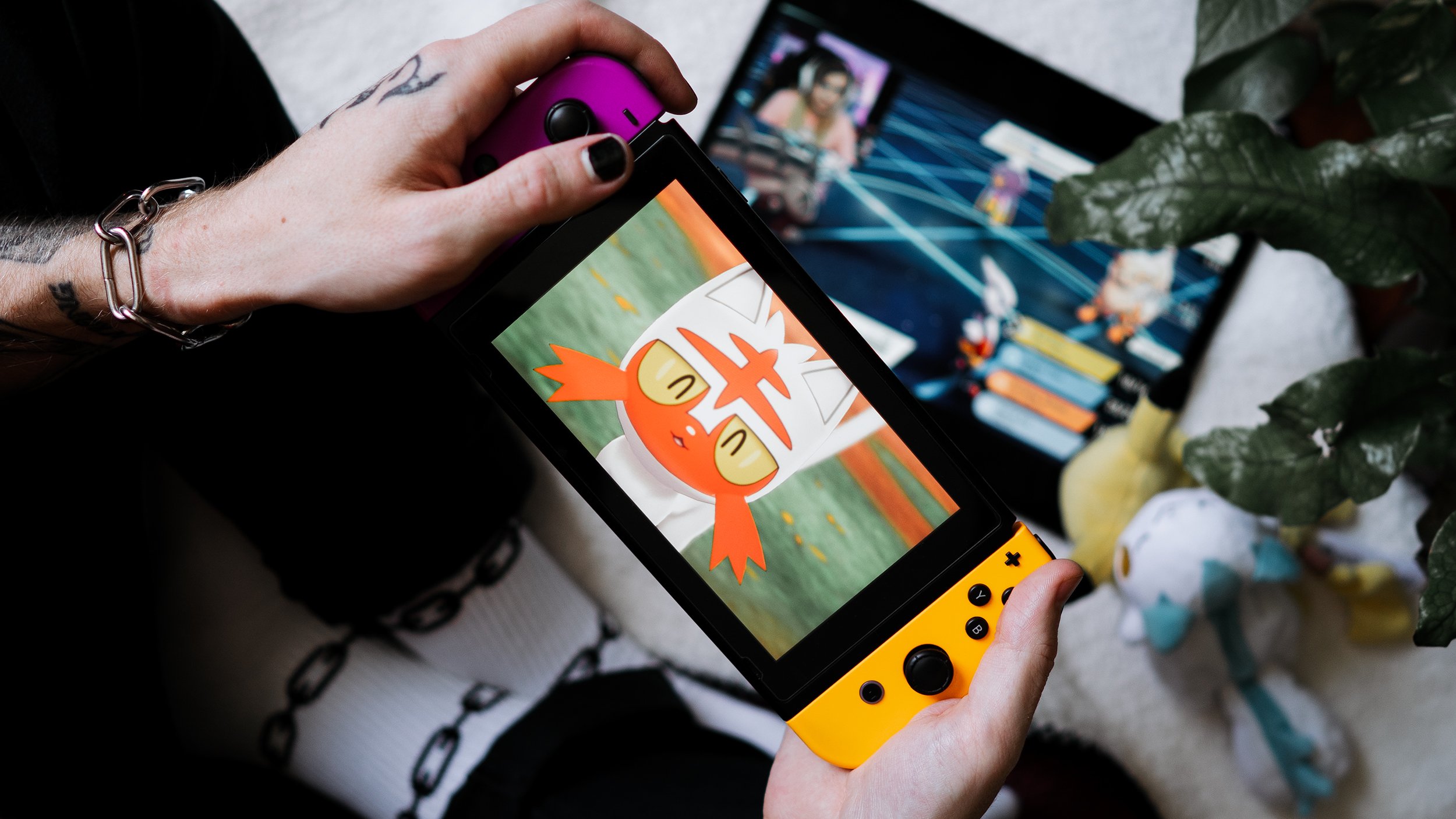
Typing
8min 15sec read
The type chart is fundamental to Pokémon, and each Pokémon has a typing-- but which types are most important, and how should they fit into your team?
Written by Aaron Traylor
Teambuilding / Concrete Building Blocks
A Pokémon's typing greatly impacts how that Pokémon can be used in battle, from resisting damage to getting more damage out of attacks. However, not all types are created equal. The type chart is important, but how your team approaches covering it depends on the metagame and the threatening Pokémon that exist.
Typing usually refers to a Pokémon's types in a defensive sense, when it's taking damage from attacks. When we talk about a Pokémon's offensive capabilities, we talk about STAB attacks or coverage.
What does it mean for a Pokemon to have “good” typing?
Typing is useful in the context of the Pokémon that are popular in the metagame. If an offensive Pokémon appears on 60% of teams, and you have a Pokémon that resists its powerful attacks AND can do something useful in return, that Pokémon is likely going to be a good member of your team because of its typing.
Pokémon with good typing often have few weaknesses, and might not have 4x weaknesses to common types. Another sign is that the moves that do hit them for super effective damage are hard to come by on good Pokémon in the format; for example, in most formats, Bug- and Poison-type moves are generally challenging to fit on teams, so you wouldn’t need to worry about those weaknesses as much.
A Pokémon’s typing is also good when it synergizes with the other Pokémon on your team. If a Pokémon has typing that lets it resist attacks that would deal significant damage to other Pokémon on your team, that’s going to allow you to switch more often. This means a Pokémon can have good typing in general, good typing for your specific team, or a combination of both.
A Pokémon can only make use of its typing defensively if it has the stats to back it up. For example, if you were looking to make use of Fighting/Bug typing defensively, you’d look at Buzzwole before you looked at Pheromosa.
With Pokémon that have good typing, you can:
Switch in on powerful attacks that threaten your Pokémon on the field
You can even switch Pokémon multiple times in the same game!
Once on the field, survive attacks and take control of the battle
Put pressure on your opponent by making use of both defensive typing and offensive coverage
Note: Steel-types are frequently useful defensively due to the amount of attacks they resist. Pokémon like Metagross, Bronzong, and Dialga are classic examples of Steel-types that have the defense to back up their stats. However, Pokémon like Kartana and Bisharp, while they are certainly Steel-type, have holes in their defensive stats (as well as important 4x weaknesses) that make them much more challenging to use defensively. This is why some players choose to give Kartana the item Assault Vest, which shores up its Special Defense stat and lets it switch in on most non-Fire-type attacks. When Bisharp is used, it typically carries a Focus Sash or Life Orb, and is used for its offensive coverage and strong ability rather than for its Steel typing.
EXAMPLE
Worlds 2019 Top 4 James Baek VS Naoto Mizobuchi: In this match, we can see the value of a strong Steel-type Pokemon. James’ team features Xerneas, an incredibly powerful restricted Pokemon. However, Xerneas is inherently weak against Steel-type Pokemon. In game 1, James pays Stakataka enormous respect and uses Incineroar and Amoonguss to position around it, and finally uses Xerneas to deal enough damage to win.
In game 2, Naoto turns a lead that looks bad on paper into an early advantage by using Wide Guard and Gyro Ball with his Stakataka to pick up an early KO on James’ Tornadus. As the game progresses, we see that the threat of Stakataka caused James to not even bring his Xerneas. Due to Stakataka's defensive typing and the support from Tapu Fini and Groudon, James is unable to get any damage onto it despite his adaptation, and Stakataka continues whittling away at James’ team until Naoto is ready to close out the game.
The third game opens with a third set of unique leads from each player. Realizing Stakataka's influence (and seeing how the Tornadus/Kyogre lead from the previous game had been ineffective versus it), Naoto chooses to bring Stakataka in the back and focuses on eliminating one of its biggest checks in James’ Amoonguss, which he takes down turn 1 with an aggressive double target. With Amoonguss out of the way, Naoto is free to set up Trick Room and use the strong offensive combination of Groudon and Stakataka to secure victory.
In my opinion, Staktaka was the most crucial Pokemon in this set, in large part due to its Steel typing. Combining Stakataka's good bulk with great defensive typing, we see that so many of James’ options to damage it were removed by the support Naoto had. Kyogre's Water Spout was blocked by Wide Guard and Desolate Land, Amoonguss couldn’t use Spore thanks to Tapu Fini’s Misty Terrain, and Kartana was awkward to bring in general thanks to the rest of Naoto's team. Every single move James had available to use against the Stakataka in games 2 and 3 was mediocre at best- Naoto always had an answer when James could use moves that would really threaten Stakataka.
What does it mean for a Pokemon to have “bad” typing?
Pokémon can be hindered by their defensive typing. If a Pokémon has many weaknesses and few resistances, or has 4x weaknesses to common attacks with no other defensive merit, you won’t be able to rely on it to take attacks or to switch in. If you need that Pokémon for offensive purposes, a bad typing may not be the end of the world– but you’ll notice in your games that you’ll be constrained on when you can switch that Pokémon in, which can be exploitable by your opponents.
Thinking about the type chart when teambuilding
A common misconception is that your Pokémon team needs to cover all types offensively (need to be able to hit every type for super effective) or defensively (need to be able to resist every attack). In fact, typing is slightly more contextual than that. As mentioned previously, the Pokémon that you’ll face more frequently determines which typing is important. You’re going to want to get a sense of which Pokémon will be attacking you most frequently; your own experience or usage stats can be a great source of information.
You will want some balance on your team’s types, however– you don’t want a common Pokémon to be able to plow through your team! Make sure that you have Pokémon that can switch in on common attacks for each other. Some of my friends use the Marilland Teambuilder to plug in their team and make sure they have a good balance of defensive coverage. From there, they cross-reference the output with what they understand of the format, and go back to the teambuilder from there. You might be okay with having three Pokémon that are weak to Bug-type on your team; but if you’re thinking about including three Fairy-type weak Pokémon on your team, you might want to take a step back.
When I pick Pokémon for my teams, ideally, I’m not picking Pokémon just for their typing– but the Pokémon does something offensively or defensively that I’m interested in, and its typing means that it will synergize nicely with the rest of my team. When I notice I’m focusing on finding the perfect typing that solves all my problems, I end up looking at Pokémon that I don’t think are very good. This is a sign to me that the rest of my team needs rethinking. Especially beware of Pokémon that have low damage output in these scenarios– it’s easy to justify choosing them based on their supportive moves, but typing alone won’t save you from threats that have high damage output.
Note: Players familiar with Single Battles are often surprised that Skarmory, who is very useful in single battles, doesn’t get more use. Skarmory has phenomenal defensive stats and good defensive typing. However, due to the increased pace of VGC matches and the lack of usefulness of entry hazards, Skarmory isn’t able to contribute to VGC matches in a meaningful way most of the time. If you want to read more about this concept, check out our article on Island Pokémon.
EXAMPLE
In Single Battles, Skarmory is able to use it’s naturally high base defense stat to great effect, such as in this battle here. Skarmory is used as a counter to the opponents Urshifu-Rapid-Strike.
Let’s look at the same teams, but in a Double Battle. In this battle, Skarmory is no longer safe to switch in, nor does it beat Urshifu, because Urshifu’s partner is able to threaten it with super effective special damage. In Double Battles, Skarmory is not able to perform the role it is so well known for in Single Battles.
Does typing always matter?
In restricted metagames or GS cup metagames, there are a few Pokémon that hit much harder than other Pokémon— culprits include Xerneas, Primal Groudon, Primal Kyogre, and Calyrex-Shadow, among others. When the metagame revolves around supporting these Pokémon, it’s important that your Pokémon are focused on resisting their attacks– and you can kind of forget about some of the rest of the type chart, because other Pokémon will appear less frequently, and won’t be hitting you with the same strength.
Wrapping Up
The type chart is one of the first things that we learn about Pokémon, and it’s easy to think that we need to cover all of it at once. However, it’s much less necessary to have every Pokémon be a different type, or to make sure to cover for every type defensively, than it is to understand how your Pokémon operate defensively and how typing plays into that puzzle.

